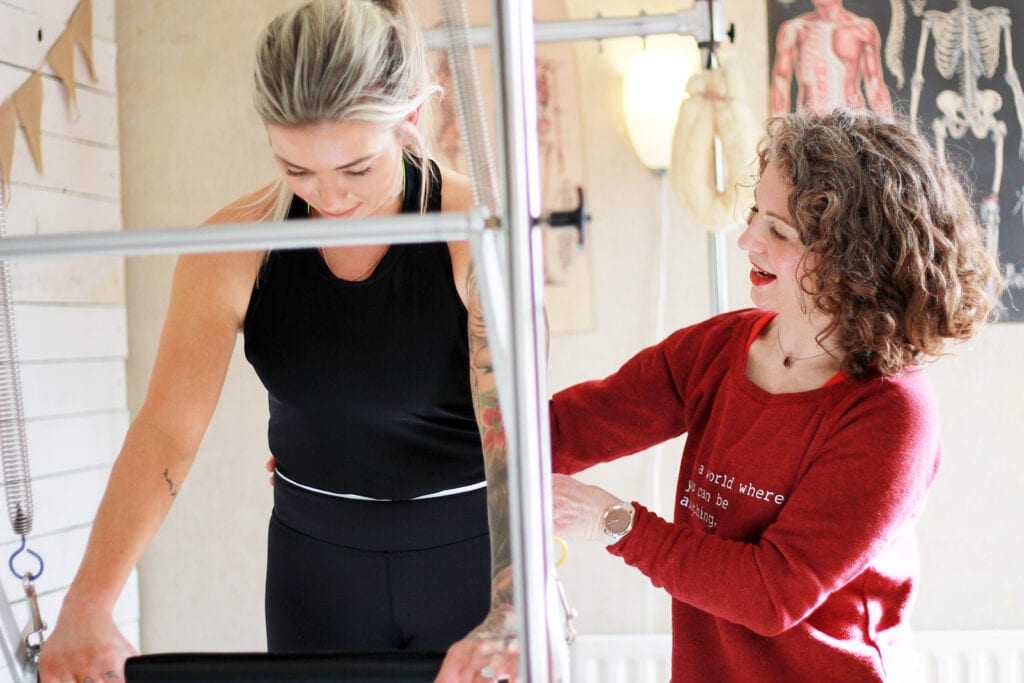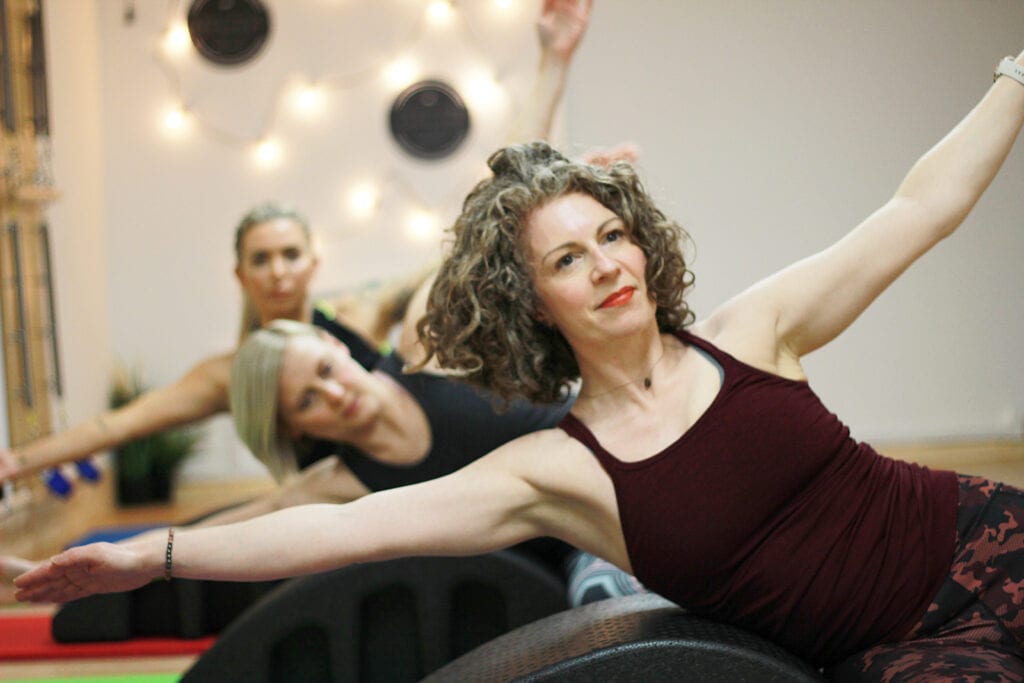Change Takes Time
When I first learned how to teach Pilates I was provided with a framework on what to say for the first rep, second rep, and third rep. And, while that framework was great for me as a newbie instructor I soon realized that all those words did not add up to teaching my client anything. It’s easy as Pilates instructors to think we have to cue, correct, and talk a lot to help our clients “get” Pilates. But, what if you could talk less and your clients could learn even more?
In a recent interview I did with Breathe Educations Raphael Bender I shared a story about how Jay Grimes told me and my fellow Work crew how you cannot “talk” Pilates into a client. That a clients’ body will be the best teacher for them. And, how our job is to provide them with the exercises that will allow their body to connect, move and grow stronger.
I know for me, when I heard this, I was slightly skeptical. But, then after practicing it as a teacher, I realized that not only did I have more energy after a day of clients my clients felt that the workout was automatically harder. One client even thought I was “mad at them” because he felt like I had anti-upped their workout. I hadn’t. It was the same workout as the week before. The only thing I did differently was start them off on the exercise and then asked them to feel something while they moved. I didn’t give them any other corrections or cues.
Since that session, we haven’t gone back to the old ways of me guiding them through every rep.

How Do You Know You Might Be Talking Too Much?
Well, there are a few signs. One, they get confused from rep three and four, they don’t “get” or “feel” the exercise and the last one is my favorite. They come in telling you something you have been trying to tell them for years!
I had a client that I had been telling for a couple of years how to stand up straight only to just let it go when I decided to stop “talking” Pilates into my client’s bodies. One day she came in and showed me how she discovered to stand up straight on her own. It was all the cues I had been giving her for years. She finally was ready to do it on her own. And, her body was at a place of strength, ability, and coordination to do the thing.
So, How Can You Try to Incorporate Talking Less and Allowing Them to Feel More?
- Ask them a question? What can they try to discover on their own while they move?
- Allow it to be ugly. Safe but ugly. Don’t correct their bodies to make them look like they are doing the exercise. Looks can be deceiving. It can look like a Teaser but they can be totally in their quads and lower back and not their center at all.
- What other exercises around the room can teach the concept of the exercise you are trying to correct. Or, trying to teach them. I never teach Horseback on the Reformer until they are doing Spine Stretch, Arm Circles, Side Splits, Standing Arm Springs, and Push-down. All of those exercises have key elements of Horseback on the reformer. So, when they go to do the horseback I can ask them for more push down or more teaser or more side splits.
- Give them permission to take ownership of their workout and remember their exercises. Think up daily life activities that an exercise help them do and encourage them to think about them as they are out and about. They will be so excited when they are out doing their life and they can call upon their Pilates that they’ll want to dive into it, even more, to see what other activities get easier.
Why Does Talking Less Help Your Clients?
- When you take one sensory away the others step up a notch. If they are not constantly trying to do whatever you say the mind and touch sensors will pick up the slack and connect quicker.
- Clients will always try to appease you and do what you say and will get frustrated with themselves and Pilates when they feel they cannot do what you are asking. If you let their bodies see what they can take each exercise your client will feel more successful.
- On their own, they will be more inclined to do their Pilates homework because they won’t have you coaching them through as a crutch.
- Their body is smart, and given the chance to be its own captain it will step up!
How Can You Begin to Incorporate this Into Your Next Session?
- Start small. Don’t go from talking to every rep to being silent and miming. Instead, see how much they can do an exercise without your coaching. Maybe talk to every other rep.
- Think about your client and think about the exercises they struggle with the most. Then give them other exercises that could teach them at the beginning of the session. Then call upon what they felt in those exercises throughout the rest of their session.
- When in doubt about what to say try “Keep Going.” And, just see what happens.
- Self check-When you work yourself out how much are you correcting every move you make? Try to talk half as much the next time.
Change takes time. Whether you are trying to change how you teach and talk or how a client does an exercise. Pilates is a practice and they have their whole life to “get it.” So, give them the freedom to make some errors along the way. Give them permission to move. Give yourself credit for all that you know and get creative with what your client needs to do the exercises you want them to do.
For more on this topic stay tuned for an upcoming course with Lesley. Or, if you’re wanting more training on this contact me here and we can do some personal training and observation on your teaching. In the meantime enjoy saying few words and watching Pilates teach more.
xx~LL






Another one to print out and keep! Thank you Lesley❤️
Ohh! I love when I hear you press ‘print!’ xx~LL